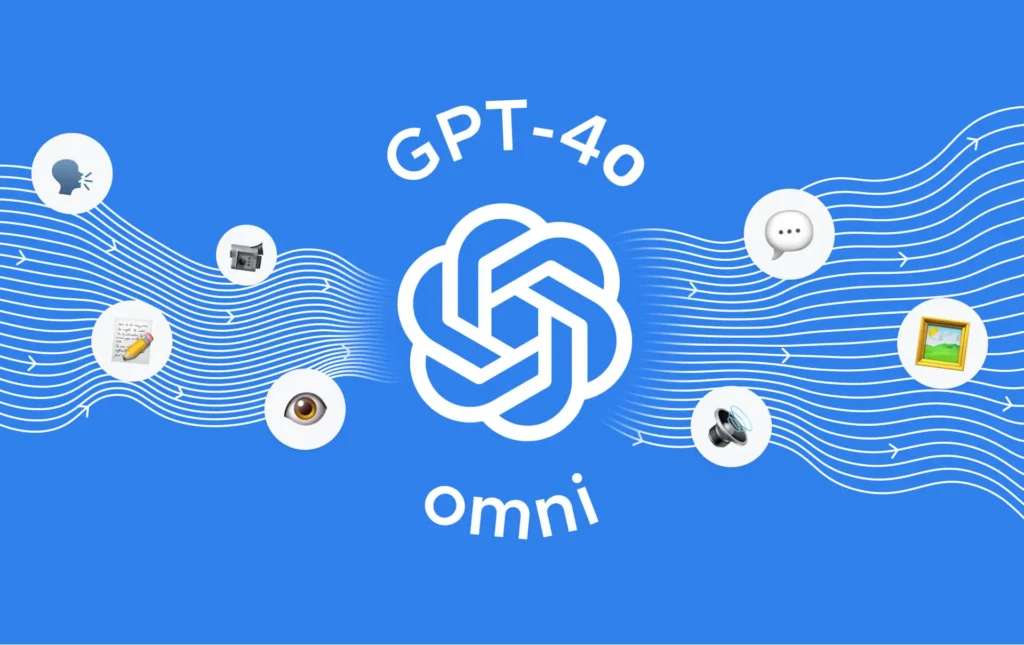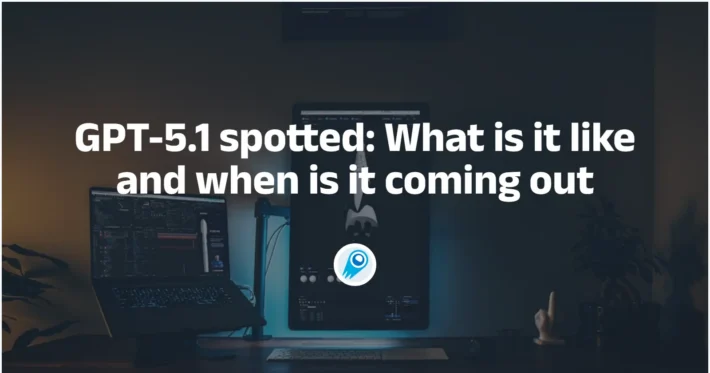How to switch back to GPT-4o if you hate ChatGPT-5

GPT-4o is OpenAI’s high-performance, multimodal successor in the GPT-4 line that is available via the OpenAI API, in ChatGPT for paid tiers, and through cloud partners such as Azure. Because model availability and default settings have changed recently (including a brief replacement with GPT-5 and a user-driven restoration of GPT-4o in ChatGPT), the sensible path to access depends on whether you want consumer/chat access, developer/API access, or enterprise/cloud deployment. Below I explain what GPT-4o is, the current pathways to get it, step-by-step instructions for each path (including code examples), and practical tips to avoid surprises.
What is GPT-4o and why do people still want it?
A quick model snapshot
GPT-4o is one of OpenAI’s multi-purpose large-language models introduced after GPT-4 and before GPT-5. It was positioned as a capable, conversationally strong model with broad multimodal handling and real-time style characteristics that many users found pleasant and predictable. Even after the rollout of GPT-5, a strong portion of the community asked for legacy access to GPT-4o because they preferred its conversational tone and performance trade-offs for certain tasks. OpenAI acknowledged this feedback and restored GPT-4o availability for paid ChatGPT users in August 2025.
Why you might choose GPT-4o over newer models
Feature compatibility: For some apps or processes already tuned to GPT-4o behavior, re-training prompts or safety settings for a different model can be costly. Restoring the older model saves that migration effort.
Style and behavior: Some users prefer the conversational style, latency, or answer patterns of GPT-4o for creative writing, tutoring, or assistants that should feel more “human.”
Cost/performance trade-offs: Depending on pricing and token accounting, GPT-4o can be a pragmatic choice for many applications where the absolute top reasoning improvements of a newer model aren’t necessary.
Variant breakdown (practical view)
- gpt-4o (full): highest capability for complex multimodal tasks; best for highest-quality reasoning across audio/video/text/image.
- gpt-4o-mini: cheaper and faster; good for high-throughput text or light multimodal tasks.
- gpt-4o-realtime / audio variants: optimized for low latency and conversational audio (speech-to-text, text-to-speech, and live sessions). Use these if you’re building voice agents or live transcription + response workflows.
How can I get GPT-4o in ChatGPT right now?
If you use ChatGPT as a consumer (web or mobile), the fastest route to GPT-4o is through your ChatGPT account—provided OpenAI has made the model available in the UI for your subscription tier. After recent product changes surrounding the launch of GPT-5, OpenAI reinstated GPT-4o as an option for paid users and added a “show legacy models” toggle in the settings so people can choose older models like GPT-4o alongside newer ones.
Practical steps (desktop/mobile):
- Log into chat.openai.com (or the ChatGPT mobile app).
- Open Settings → Beta features / Model settings (labeling varies by release) and enable Show legacy models or similar.
- From the model selector, choose GPT-4o (or the named variant) for your conversation.
- If you don’t see the model, confirm you are subscribed to a paid tier (Plus/Pro/Enterprise) and that the app is updated. official statements show the model can be toggled back on for paid users when defaults shift.
Why this matters: when a model is exposed in the ChatGPT UI it’s the simplest option for most people—no API key, no code, instant conversation state, and features like voice or vision (when enabled) work right away. But availability in the UI is controlled by OpenAI’s product rollouts and subscription tiers, so the UI route is the most convenient but not the only way to get it
ChatGPT Plus ($20/month) — priority access, faster responses, and earlier availability of new features. This tier often restores access to legacy or optional models for active subscribers.
ChatGPT Pro ($200/month) — a higher-tier individual plan marketed to power users and researchers; offers expanded access to premium models (including unlimited or very generous access to advanced models in many rollouts) and priority compute.
Remember API billing is separate from ChatGPT subscriptions.
How do developers get GPT-4o via the OpenAI API?
Quick API checklist
- Create an OpenAI account and verify billing.
- Generate an API key from the OpenAI platform dashboard.
- Use the model name (for example,
"gpt-4o"or the specific ID shown in the models list) when making Chat Completions or Assistants API calls. - Monitor token usage and costs, and use batching, streaming, or function calling to optimize consumption.
Example (Python) call
Below is a minimal Python example that shows how you would call GPT-4o once you have an API key (replace YOUR_API_KEY and the model name as appropriate):
from openai import OpenAI
client = OpenAI(api_key="YOUR_API_KEY")
resp = client.chat.completions.create(
model="gpt-4o",
messages=[
{"role":"system","content":"You are a helpful assistant."},
{"role":"user","content":"Summarize the latest changes to GPT models and why someone might keep using GPT-4o."}
],
max_tokens=500
)
print(resp.choices[0].message.content)
Notes: OpenAI’s SDK and endpoint names evolve — check the latest platform.openai.com/docs examples for the exact method names and available parameters before production deployment.
Third-party integrations: CometAPI
CometAPI is a unified API platform that aggregates over 500 AI models from leading providers—such as OpenAI’s GPT series, Google’s Gemini, Anthropic’s Claude, Midjourney, Suno, and more—into a single, developer-friendly interface. By offering consistent authentication, request formatting, and response handling, CometAPI dramatically simplifies the integration of AI capabilities into your applications. Whether you’re building chatbots, image generators, music composers, or data‐driven analytics pipelines, CometAPI lets you iterate faster, control costs, and remain vendor-agnostic—all while tapping into the latest breakthroughs across the AI ecosystem.
Developers access GPT-4o through the CometAPI platform as a model name (e.g., gpt-4o / gpt-4o-mini /gpt-4o-realtime-preview-2025-06-03/gpt-4o-audio-preview-2025-06-03 depending on the variant). The platform docs list available GPT-4o endpoints and capability notes — including that GPT-4o supports text and vision inputs in the API today, with audio capabilities being rolled out to trusted partners. Use the /v1/responses (or /v1/chat/completions ) and supply "model": "gpt-4o" in the request body. Always confirm the exact model token names in CometAPI’s model docs.
To begin, explore the model’s capabilities in the Playground and consult GPT-4o for detailed instructions. Before accessing, please make sure you have logged in to CometAPI and obtained the API key. CometAPI offer a price far lower than the official price to help you integrate.
Below is a conceptual curl example (replace YOUR_KEY and the model name with the exact ID shown in the docs):
curl https://api.cometapi.com/v1/chat/completions \
-H "Authorization: Bearer YOUR_KEY" \
-H "Content-Type: application/json" \
-d '{
"model": "gpt-4o",
"input": "Give me a short summary of GPT-4o."
}'Why use model aggregators (benefits)
Third-party aggregators such as CometAPI present a single unified API that can route requests to dozens or hundreds of LLMs and compute backends. Typical benefits:
- Choice & cost optimization: switch models dynamically to reduce cost (e.g., route classification to cheaper mini models, reserve larger models for complex tasks). Aggregators advertise discounts and the ability to “shop” among providers.
- Failover and redundancy: if one provider is degraded, traffic can be routed to an equivalent model on another vendor, increasing reliability.
- Simplified integration: one SDK, one quota/billing interface, unified logging, and often built-in retries and caching. This reduces engineering integration work.
- Vendor lock-in protection: you can swap providers behind the aggregator without refactoring product code. That’s powerful for long-term procurement flexibility.
Can enterprises and cloud customers deploy GPT-4o through Azure or other providers?
Yes. Cloud providers have integrated GPT-4o into their managed OpenAI offerings. For example, Microsoft Azure’s OpenAI/AI Foundry includes GPT-4o and GPT-4o mini among deployable models for supported regions and SKUs; enterprises can create a Standard or Global Standard resource, then deploy a GPT-4o model inside that resource. This path is ideal for companies that require cloud provider SLAs, VNET integration, or specific compliance tooling.
Steps for Azure deployment (high level)
- Create an Azure OpenAI (or AI Foundry) resource in a region that supports GPT-4o.
- Under the resource, create a new deployment and select the GPT-4o model name.
- Configure capacity, authentication (Azure AD), and networking (VNET/private endpoints) to meet security/compliance needs.
- Use the Azure SDKs or REST endpoint to call the deployed model with your Azure credentials.
Azure’s docs contain the exact deployment names and region-support matrix; follow them for the latest region availability and pricing.
What are best practices for using GPT-4o safely and efficiently?
Design for resilience. Don’t assume UI permanence; design integrations around the API with feature flags so you can swap models without large changes to your codebase.
Optimize prompts. Clear, concise system and user messages reduce token use and improve outputs. Consider instruction templates and prompt libraries for consistent results.
Monitor cost and quality. Set usage alerts and do periodic qualitative reviews. Newer models can be cheaper or more expensive depending on how you use them; track both spend and correctness.
Respect policy and privacy. Follow OpenAI’s content policies and avoid sending sensitive personal data unless you have appropriate compliance measures in place. When integrating third parties, confirm data handling policies.
How do I manage portability, costs, and continuity when relying on GPT-4o?
Portability and version control:
- Keep your system decoupled from a single model: build an abstraction layer so you can switch model names (e.g.,
gpt-4o→gpt-5) without refactoring product logic. - Keep a changelog of prompt formulations and model responses so you can compare behavior across model upgrades.
Cost controls: Use batching, set sensible max_tokens, and cache deterministic answer types to limit repeated charges. Monitor usage and set alerts in the OpenAI dashboard or your cloud provider billing.
Continuity planning: Implement fallbacks: for example, if GPT-4o is unavailable, fall back to a smaller model or queue requests. Maintain a human-in-the-loop process where outputs affect critical user experiences.
Conclusion
OpenAI continues to push new models (GPT-5 is rolling out as of the latest announcements), and product UIs will keep evolving. If your requirements demand GPT-4o’s unique multimodal audio+image+text combination today, the paths above are your best options (ChatGPT Plus, API, Azure, or partner integrations).


